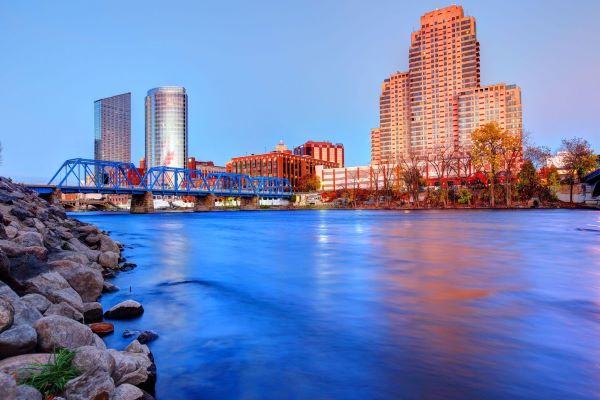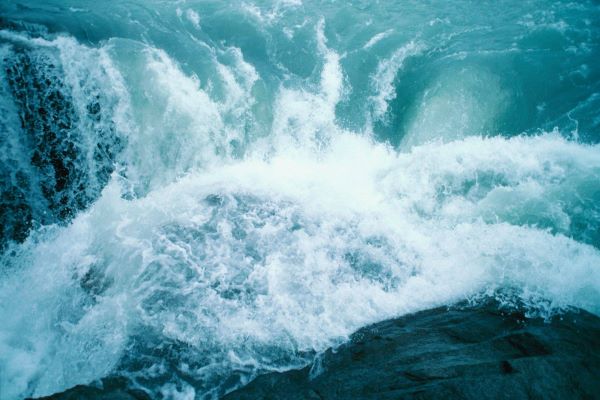Kayaking can be a fun and exhilarating experience, but only if it’s done safely. One of the most important aspects of kayaking safety is understanding the different types of rapids and making sure you are skilled enough to navigate them. In this article, we will explore the different international categories of rapids and what they mean for kayakers.
What are the different international categories of rapids?

There are six different international categories of whitewater rapids, which are defined by the severity of the whitewater and the skill level required to navigate them safely. The six classes (I – VI) are as follows:
Class A: Still water that is flat, like a lake. Suitable for beginner kayakers with basic paddling skills.
Class I – EASY.
This class includes smooth water, light riffles, and clear passages with the occasional sandbank or gentle curve. The most difficult problems you might encounter would be when paddling around bridges or other apparent obstructions. Suitable for beginner kayakers with basic paddling skills.
Class II – MODERATE.
The water on this route flows at a medium-quick speed, with regular waves. Clear passages between rocks and ledges will require some maneuvering skills. It is recommended that intermediates who are able to better handle a kayak (or other vessels) and read the changing water conditions should attempt this.
Class III – MODERATELY DIFFICULT.
These rapids can pose a challenge for even experienced paddlers. These rapids typically have high, irregular waves, as well as rocks and eddies that make passage difficult. In some cases, Class III rapids can only be safely run by experts during certain water levels or seasons.
Class IV – DIFFICULT.
Long and powerful rapids with large waves and strong currents; souse holes, boils, and other dangerous obstacles that require precise maneuvering to avoid danger. Visual inspection is often required in order to run these challenging rapids, and they may not be suitable for less experienced paddlers without proper flotation or safety equipment.
Class V – EXTREMELY DIFFICULT.
Long, violent rapids with continuous and powerful currents; large drops, and frequent obstacles require precise maneuvering and expert paddling skills to avoid danger. These challenging rapids are unsuitable for beginner or intermediate paddlers, and advanced preparation and rescue equipment is generally required before attempting them.
Class VI – EXTRAORDINARILY DIFFICULT

These extreme rapids are considered the most challenging and dangerous whitewater on earth, with powerful and continuous currents, large drops, and complex obstacles that require extensive experience, advanced skills, and specialized safety equipment to navigate them safely. Only expert paddlers should attempt to run Class VI rapids. They should do so only under the guidance of experienced guides or at specifically designated times when water conditions are favorable. Otherwise, they are generally considered unnavigable. If a class VI rapid has been successfully run, they are downgraded to either a class V or V+.
It may be helpful to watch VIDEOS on the classification of rapids.
What do these categories mean for kayakers?
The different international categories of rapids represent the severity of the whitewater and the skill level required to navigate them safely. Class A rapids are suitable for beginner kayakers with basic paddling skills, while Class VI rapids are considered the most challenging and dangerous whitewater on earth. In order to safely navigate Class III – V rapids, intermediates should be able to handle a kayak (or other vessels) and read the changing water conditions. Considered unnavigable, for Class VI rapids, advanced preparation, and rescue equipment is generally required.
How can you safely navigate different types of rapids?
In order to safely navigate different types of rapids, it is important to be aware of their level of difficulty and to only attempt those that fall within your skill level. For instance, Class I rapids are typically easy and smooth, while Class VI rapids are extremely difficult, and dangerous and pose a serious threat and challenge even for experts.
Furthermore, it is important to inspect the rapids before running them in order to determine if they are safe to navigate. If you are unsure about how to navigate a particular rapid, it is best to ask an experienced kayaker or whitewater rafting guide for advice.
Are there any other safety precautions you should take when kayaking on a river?
In addition to knowing the level of difficulty of the rapids you are attempting to navigate, there are a few other safety precautions you should take when kayaking on a river.
Firstly, it is important to always wear a life jacket when kayaking, as this will help keep you safe if you end up in the water. Additionally, it is a good idea to bring along a first-aid kit and some form of communication device, such as a whistle or cell phone, in case of an emergency.
Finally, it is important to be aware of the weather conditions and to avoid kayaking in high winds or dangerous weather conditions.
What should you do if you encounter a rapid that is too difficult to navigate safely?
If you encounter a rapid that is too difficult to navigate safely, it is important to take the necessary precautions to ensure your safety.
First, try to assess the situation and determine if there is a way to safely bypass the rapid. If there is not, then you will need to portage (carry) your kayak and gear around it – on the shore.
It is also important to remember that it is always better to be safe than sorry and that it is better to avoid a dangerous rapid than to attempt to navigate it and risk getting injured or stranded.
Where can you find more information about kayaking safety and the different types of rapids?
The international categories of rapids are a system that has been developed to standardize the classification of different types of river rapids. These categories take into account factors such as water depth, speed, and features like rocks and drops in order to provide an objective way of categorizing different rapid types.
For kayakers, these categories can be helpful in determining whether a particular rapid is within their skill level and whether they have the appropriate safety gear and techniques to safely navigate it. Some of the most common categories include Class I, II, III, IV, V, and VI rapids, each of which has different features and hazards that kayakers should be aware of.
If you are interested in learning more about kayaking safety and the different types of rapids, there are a number of online resources available. Some popular kayaking forums and blogs can provide helpful tips and advice from experienced kayakers, while online whitewater kayaking guides and training programs can give you a deeper understanding of the skills and techniques needed to safely navigate challenging rapids. Additionally, your local whitewater rafting club or kayaking group may be a good resource for finding more information about the rapids in your area.
Conclusion
Kayaking can be a fun and exhilarating experience, but it is important to remember that it can also be dangerous. Before you head out on the river, make sure you are familiar with the different types of rapids and their corresponding levels of difficulty. It is also important to take into account other factors such as weather conditions and your own skill level before embarking on a kayaking journey.
If you do encounter a rapid that is too difficult to navigate safely, remember that it is always better to be safe than sorry. There is no shame in portaging (carrying) your kayak and gear around a difficult rapid – on the shore. With these tips in mind, you should now feel more prepared to tackle any type of rapids on your next kayaking adventure!
Leave a comment below if you have any other tips or advice for kayakers navigating challenging rapids.

This has given me a real appreciation for what is required for kayaking in different waters. I didn’t realise there were actually categories to gauge the rapids.
This is a very informative yet easy to read and understand article for someone new to it like myself. Out of curiosity, where in your opinion is the most dangerous rapid? And what is the highest category you have attempted yourself?
Hi Ryan,
Thank you for your kind words and your interest in the topic. I’m glad you found my article informative and easy to read. Kayaking is a wonderful sport that can offer a lot of fun and adventure, but it also requires a lot of respect and preparation.
As for your questions, the most dangerous rapid in the world is a matter of debate, as different rapids pose different challenges and risks depending on the water level, the weather, and the skill of the paddler. However, some of the most notorious rapids that are often considered the most dangerous are:
The Terminator on the Futaleufú River in Chile, has a Class V rapid with huge boulders, holes, and waves that require expert maneuvering.
The Ghostrider on the Zambezi River in Zambia, also has a Class V rapid with powerful waves and treacherous currents
The Whirlpool Rapids Gorge on the Niagara River in New York creates a Class VI rapid with massive whirlpools and eddies that can trap and drown paddlers.
The Inga Rapids on the Congo River are also Class VI rapids with violent currents, drops, and obstacles that span over 15 km with a 96m (315 ft) drop. It’s considered to be the world’s biggest rapid, with its first descent done by Steve Fisher and his team in 2015.
These rapids are not for the faint-hearted, and they should only be attempted by highly experienced and skilled paddlers with proper safety equipment and guidance. They are also subject to change depending on the water conditions, so they may not always be runnable or accessible.
As for me, the highest category I have attempted myself is Class II, which is still very challenging and exciting but not as extreme or dangerous as Class V or VI. Class I or II still require a lot of skill, concentration, and courage, but they also offer a lot of thrills and satisfaction.
I have two kids, but the youngest is just 4 months old. I’m looking forward to spending more time kayaking with the family on flat water or cat 1 rapid as the kids grow, while immersing in the thrills and serenity of nature.
I hope this answers your questions. If you want to learn more about kayaking safety and the different types of rapids, you can check out some of the online resources that I have linked in this blog post.
Cheers!